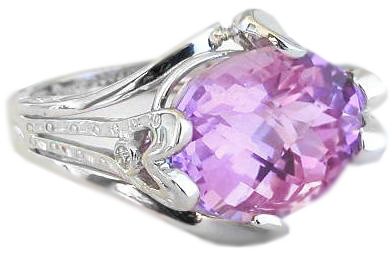Moissanite
Diamonds may be a women’s best friend, but moissanite might be able to be the closest one. This hard and brilliant gemstone has several qualities that make it superior to diamonds to some people, while others say it is cheap-looking and tacky. Regardless of individual opinions of the gemstone, it does have its uses and its brilliance.
Moissanite looks very similar to diamonds and is created to be a diamond substitute. Unlike zirconia, you can’t easily tell the difference between Moissanite and diamonds. In fact, when they first came onto the market, they sometimes confused professionals. However, there are sure fire ways to figure out which is which.
Moissanite is said to be a rival to all other gemstone because of its brilliance, hardness, weight and scratch resistance. It possesses all the romance and passion of rubies, sapphires and emeralds. It is only found in meteorites and in a very limited areas beneath the earth’s surface.
Moissanite was discovered by a French chemist and Nobel Prize winner, Dr. Ferdinand Henri Moissan. He found it at Diablo Canyon, also known as Meteor Crater, in Arizona (USA). The synthetic moissanite is known as silicon carbide because of its chemistry and the trade name, carborundum.
Moissanite’s essence was the potential for an absolutely shimmering brilliance, fire, luster, and incredible hardness. Unfortunately, the supply of natural moissanite wasn’t large enough even to create a pair of earrings.
Naturally occurring moissanite is extremely rare and found only in microscopic crystals that are too small to use in jewelry. Only after years of research a breakthrough discovery enabled the production of moissanite crystals large enough to produce an uncommon combination of science and art.
Moissanite usually comes in either one of two colors. When Moissanite crystals are very small, let’s say less than a carat, they are always clear. However, as the crystal increases in size, it has a green tinge to it.






